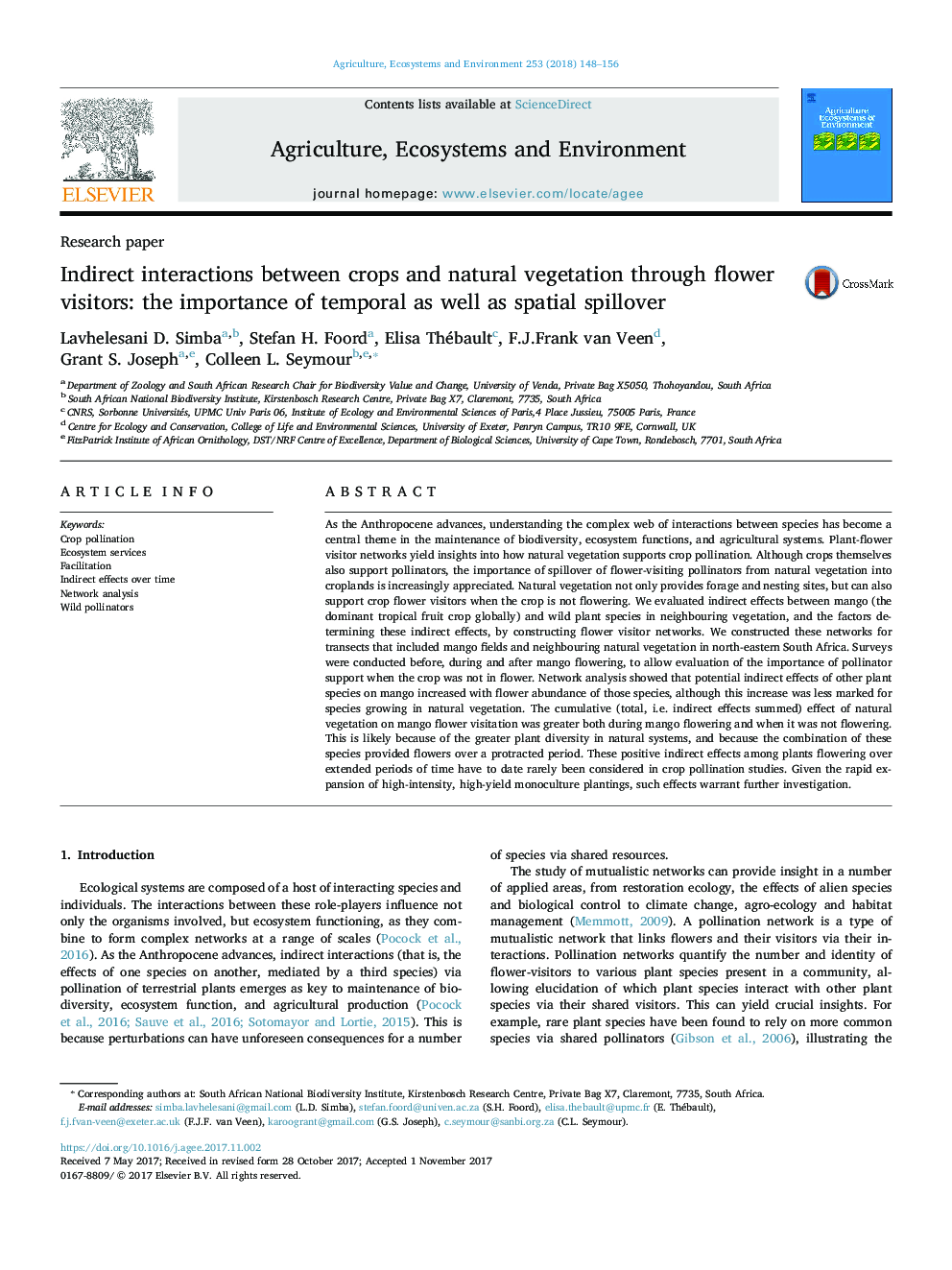| کد مقاله | کد نشریه | سال انتشار | مقاله انگلیسی | نسخه تمام متن |
|---|---|---|---|---|
| 8487241 | 1551999 | 2018 | 9 صفحه PDF | دانلود رایگان |
عنوان انگلیسی مقاله ISI
Indirect interactions between crops and natural vegetation through flower visitors: the importance of temporal as well as spatial spillover
دانلود مقاله + سفارش ترجمه
دانلود مقاله ISI انگلیسی
رایگان برای ایرانیان
کلمات کلیدی
موضوعات مرتبط
علوم زیستی و بیوفناوری
علوم کشاورزی و بیولوژیک
علوم زراعت و اصلاح نباتات
پیش نمایش صفحه اول مقاله

چکیده انگلیسی
As the Anthropocene advances, understanding the complex web of interactions between species has become a central theme in the maintenance of biodiversity, ecosystem functions, and agricultural systems. Plant-flower visitor networks yield insights into how natural vegetation supports crop pollination. Although crops themselves also support pollinators, the importance of spillover of flower-visiting pollinators from natural vegetation into croplands is increasingly appreciated. Natural vegetation not only provides forage and nesting sites, but can also support crop flower visitors when the crop is not flowering. We evaluated indirect effects between mango (the dominant tropical fruit crop globally) and wild plant species in neighbouring vegetation, and the factors determining these indirect effects, by constructing flower visitor networks. We constructed these networks for transects that included mango fields and neighbouring natural vegetation in north-eastern South Africa. Surveys were conducted before, during and after mango flowering, to allow evaluation of the importance of pollinator support when the crop was not in flower. Network analysis showed that potential indirect effects of other plant species on mango increased with flower abundance of those species, although this increase was less marked for species growing in natural vegetation. The cumulative (total, i.e. indirect effects summed) effect of natural vegetation on mango flower visitation was greater both during mango flowering and when it was not flowering. This is likely because of the greater plant diversity in natural systems, and because the combination of these species provided flowers over a protracted period. These positive indirect effects among plants flowering over extended periods of time have to date rarely been considered in crop pollination studies. Given the rapid expansion of high-intensity, high-yield monoculture plantings, such effects warrant further investigation.
ناشر
Database: Elsevier - ScienceDirect (ساینس دایرکت)
Journal: Agriculture, Ecosystems & Environment - Volume 253, 1 February 2018, Pages 148-156
Journal: Agriculture, Ecosystems & Environment - Volume 253, 1 February 2018, Pages 148-156
نویسندگان
Lavhelesani D. Simba, Stefan H. Foord, Elisa Thébault, F.J.Frank van Veen, Grant S. Joseph, Colleen L. Seymour,